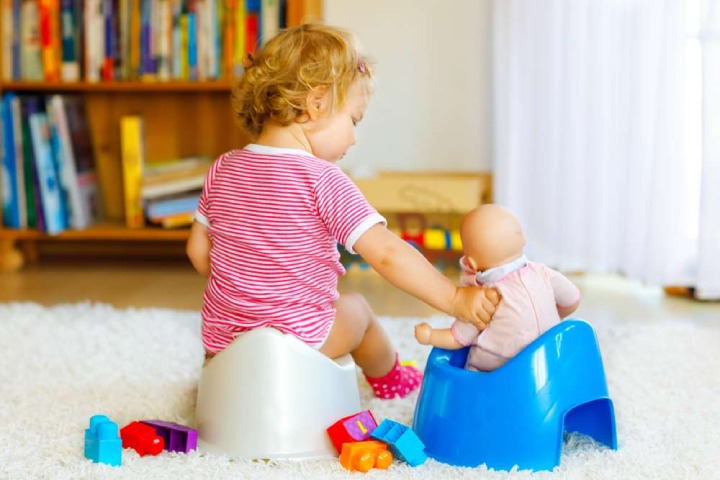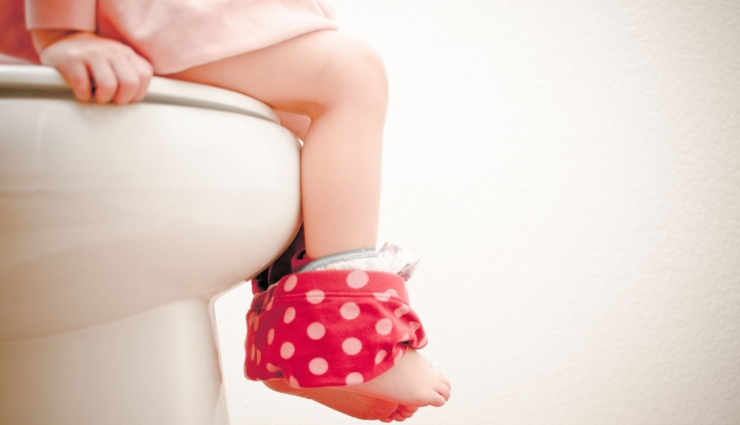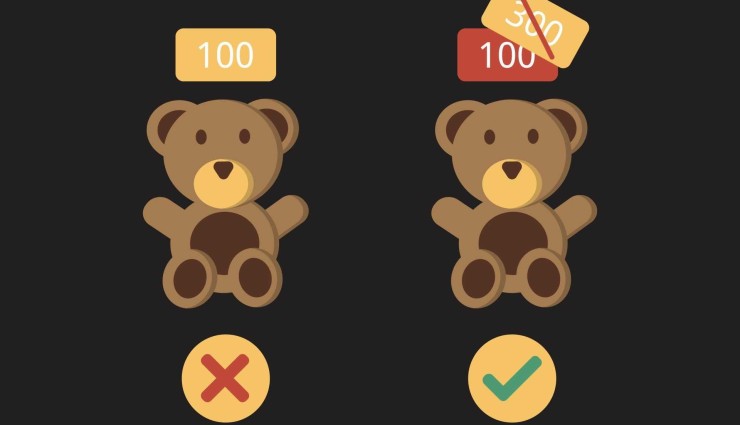Taking a child out of diapers is one of the most important milestones of childhood. Although most children are ready to be potty trained and out of diapers between 18 and 30 months, this is not the case for all children. Some children may not be entirely out of diapers by age 4, and their parents may be looking to wean a 4-year-old. You will read everything you need to know about weaning a baby in this article. Stay with us.
The importance of the child’s developmental readiness to get out of diapers
A child’s developmental readiness is essential in determining the age of starting diapers. Since each child grows at its own pace, the appropriate age for diapers may vary significantly from child to child. According to some research, starting toilet training too early or too late may create challenges and lead to regression or delay in completing this critical stage of a child’s life.
Although, according to research, children from 18 to 24 months are physically and emotionally ready to learn to go to the toilet, age is not the only factor affecting the time to take a child out of diapers, and parents may still be looking to take their 3-year-old child out of diapers.
When should we start toilet training and diapering?
To know whether it is time to put diapers away and train your child to go to the toilet, you must ensure that the child is ready to start these critical steps. The signs of the child’s readiness to take off the diaper are:
- Request to change a dirty diaper ;
- Ability to follow simple instructions;
- drying the diaper for 2 hours;
- interest in going to the bathroom and putting aside diapers;
- ability to sit on the toilet seat;
- showing interest in wearing underwear instead of diapers;
- Regular defecation and having a specific pattern for toileting.
Using training pants when taking the baby out of diapers
Although disposable training pants are considered a popular method of weaning a child, they may encourage the child to change diapers and hinder toilet learning.
Using disposable training pants for a child who still wants to be diapered when he has already been able to use the toilet successfully is like falling down a well. Disposable training pants are not as absorbent as diapers, and cleaning a child who has used these pants instead of going to the toilet is much more complex than cleaning a child who has been diapered.
Toilet training at night is much more challenging than during the day. According to statistics, 20% of 5-year-old children and 10% of 7-year-old children have occasional nocturia.
If you only use disposable training pants at night or when your baby is napping, try to stick to this rule and not use them at other times. Teach the child to go to the bathroom when he wakes up. Just like diapers, put the disposable training pants in a place out of the child’s reach.
Reasons for delay in diapering the child
Sometimes, even if the diaper is wholly removed, going to the toilet is very long. If your child still resists going to the bathroom despite his developmental readiness, you need to look for the reason for his excessive resistance.
1. The wrong way of toilet training
Check whether the method you have adopted for weaning the baby is suitable for your baby or not. Every child has a different temperament and may need to be potty trained in a specific way. If you’re having trouble getting your baby out of diapers, go back and change your approach.
2. Child’s fears
If your child is afraid of the bathroom or the toilet space, he may show more resistance to putting away the diaper. Talk to your child about his fears and reassure him that using the toilet is a normal part of his development. If the child’s fear is not resolved by talking and soothing, the child’s counselor may need to intervene and find the root of the child’s fears.
3. Medical problems
Sometimes, despite your best efforts, a medical complication or problem may prevent the child from going to the toilet. Some issues that prevent a child from going to the bathroom are:
- lack of muscle control;
- pain caused by child constipation ;
- frequent urinary tract infections;
- Physical problems such as low bladder capacity.
Strategies for success in giving up diapers

1. be patient
Increasing the tolerance threshold is one of the most important things you should do at this stage of your child’s development. Your child needs a lot of preparation to go through this stage and may get anxious during this process and be unable to handle it well. Being patient and loving the child will reduce the challenges of this period and make it easier to pass this stage.
2. Be consistent
Being stable and sticking to a specific routine is the secret to success in teaching a child to go to the toilet and put away diapers. Don’t get frustrated with the most minor problem and quick challenge; don’t diaper the baby. If you are not consistent in this area, the child will understand that he can still use the diaper and may resist going to the bathroom.
3. Praise the child’s achievements
Praising the child for going to the bathroom encourages him to do it properly. Reward your child occasionally; tell him this reward is for going to the bathroom.
4. Empathize with the child
Empathize with the child’s concerns and realize that this leap towards greater independence is an essential and challenging stage for him. It may be sad or even scary for him to take diapers. Only your patience and empathy will work wonders in this situation and get him through this challenging stage.
5. Remove the diaper completely
Sometimes, failures and educational failures in diapering have more to do with the parent’s performance than the child’s skill level or readiness. Regardless of the child’s age, diapering occasionally makes the child think you are not determined to go to the toilet and remove his diaper. As long as the diaper is available to the baby, he prefers diapering to going to the bathroom, defeating all your efforts to get him out of diapers. The availability of diapers will delay toilet training for the child, and the child will not listen to your instructions.
Keeping the diaper out of the baby’s sight solves this problem. If you think your child is ready to ditch the diapers, put them where the baby can’t see or reach them.
6. Use the appropriate training method
Use a method that suits your parenting style for leaving diapers and toilet training your child. If you tried an unsuccessful process or the child was incompatible, choose another method by assessing the situation and considering the available options. Never use child punishment methods in this way.
7. Use fun tools for potty training
Fortunately, today, there are tools available to parents, such as various storybooks and fun diaper-changing games. Encourage the child to do this by reading entertaining stories about going to the toilet and talking about the characters in the book.
final word
Although weaning your baby from diapers is a challenging stage that may take a long time, eventually, your baby will learn to use the toilet without diapers. Be patient in the face of the child’s resistance and many unpredictable challenges.
What experience do you have in the field of taking baby diapers? Please share your valuable comments and experiences with us and our dear users.
Warning! This article is only for educational purposes; to use it, it is necessary to consult a doctor or specialist.



